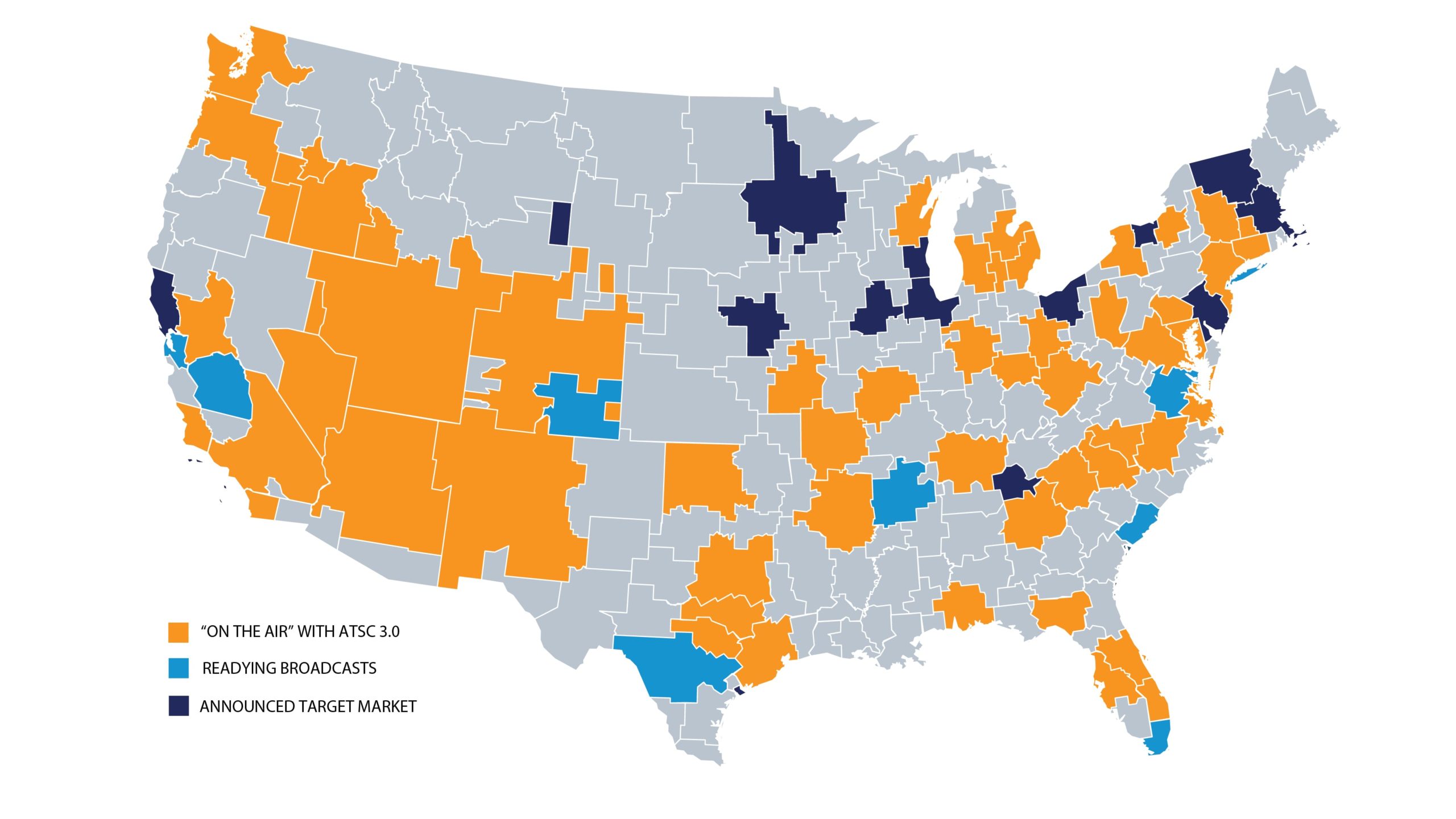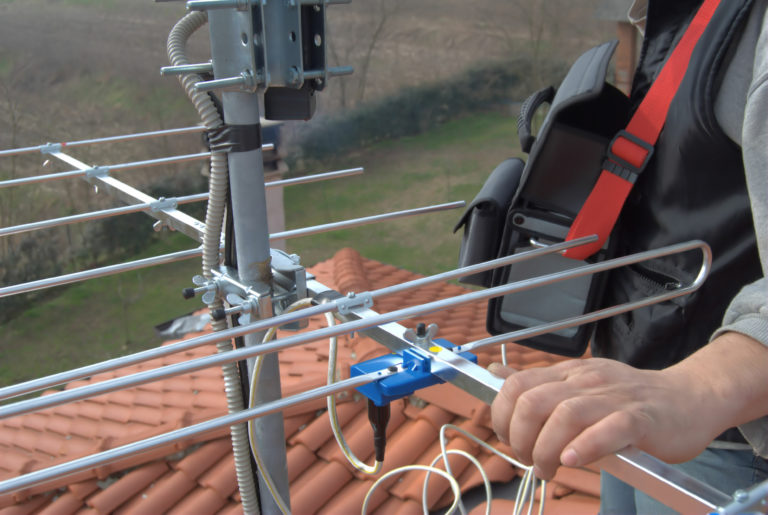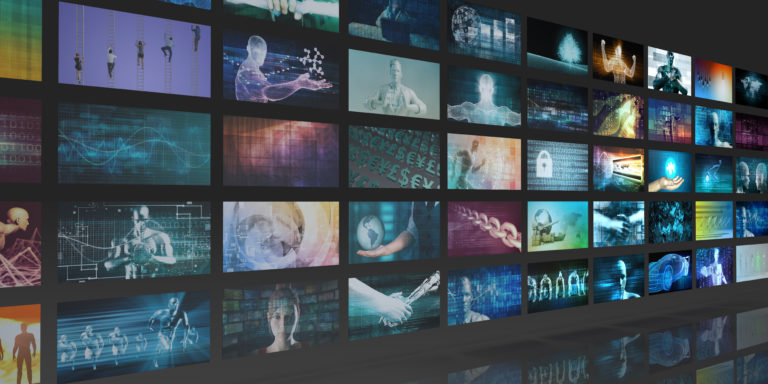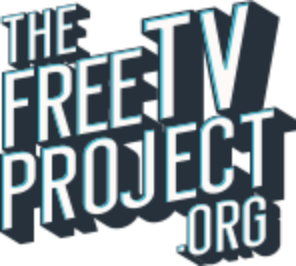Have you heard the phrase “NextGen TV” and wondered what it means and how it will affect you? Read on for everything you need to know about taking your over-the-air TV viewing to the next level.
The new NextGen TV format, which is technically called ATSC 3.0, is meant to fully bring over-the-air (OTA) TV broadcasting into the modern age of viewing. With promises of movie theater-quality resolution and sound, interactive features, increased accessibility and future-proof technology, the supposed benefits of NextGen TV are enough to excite any TV lover.
As is the case with any exciting new tech, though, there are plenty of questions. We’ll answer some of the biggest ones about ATSC 3.0 below, including when it’s coming, what exactly it is, how to take advantage of it and whether it will cost you any extra money.
What Is ATSC 3.0?
The Advanced Television Systems Committee (ATSC) is an international nonprofit whose membership consists of dozens of representatives from giants in consumer electronics, technology and broadcasting, including companies like ABC, CBS, Dolby, Google, LG, Samsung and Sony. The ATSC is responsible for setting the technical standards by which broadcasters and TV manufacturers operate, in order for viewers to easily have access to a consistent level of quality across the dial.

In the 1990s, the ATSC set the standards for what would become known as high-definition television, or HDTV. In the early 2000s, ATSC 1.0 became the standard by which most American broadcasters sent their over-the-air signals to viewers, as digital transmissions replaced analog transmissions.
The advent of ATSC 1.0 is what allowed for innovative features like digital subchannels — the bonus channels that come with your primary channels and are numbered using a decimal system, like 9.2, 9.3, etc. — to become commonplace.
ATSC 3.0 is the new, updated version of that 20-year-old system. The big point the ATSC wants to drive home about NextGen TV is that it aims to combine the powers of OTA broadcasting with the internet in a way antenna-based viewing hasn’t yet done.
What Will Be Different About ATSC 3.0?
If you go to ATSC.org, the group has plenty of in-depth information about NextGen TV, but we’ll give you the most noteworthy bits here. While current ATSC tech allows your OTA antenna to deliver 1080i full high-definition signals to your TV with no monthly fees, ATSC 3.0 promises to carry 4K ultra-high definition with high-dynamic range, which is the top-of-the-line resolution you’ll find available in most televisions these days.

The new standards will also allow for Dolby Atmos immersive audio, even more channels and interactive on-demand viewing, according to the ATSC. This means that you’ll be able to essentially get theater-quality video and sound at home. Perhaps even more exciting, it will also allow OTA TV to be watched on devices that aren’t even connected to antennas, like tablets, making the public airwaves even accessible for people who don’t have a television.
One potential drawback of ATSC 3.0 is that it aims to make advertising more specific by tracking your viewing habits in a way that the old methods of watching OTA TV never could.
When Is ATSC 3.0 Rolling Out?
Depending on where you live, you might already have local broadcasters using ATSC 3.0 in your area. By the end of 2022, NextGen TV broadcasting standards are expected to cover 60% of American households, according to reports, with 80% expected by mid-2023.
States across the map already have at least one broadcaster using the standards to send their transmissions, with more being added every month. You can see the map below from the ATSC for a look at the rollout as of March 29, 2022, with orange spots being those that are already covered, light blue ones being next to go live and dark blue ones being prepped. WatchNextGenTV.com also has a handy list of the cities that already have ATSC 3.0 available.

How Do I Take Advantage Of ATSC 3.0?
Like with most cutting-edge tech, a bit of new equipment will be required to take full advantage of ATSC 3.0. Unless you’ve bought a TV from LG, Samsung or Sony since 2020, chances are you’ll need either a new television or, at the very least, a set-top box that’s equipped with an ATSC 3.0 tuner.
CNET put together a list of new TVs and set-top boxes for 2022 that will be NextGen TV-compatible. The compatible sets range in size from 43 inches all the way up to a mammoth 95-inch TV from Samsung. It should be noted that Sony is the only brand confirmed to be offering ATSC 3.0 compatibility in its entire line of TVs for the year.

In a separate story about NextGen TV, CNET reported that, unlike ATSC 1.0 broadcasting standards, the new ones are internet protocol-based. This basically means that you’d be able to hook an OTA antenna to an ATSC 3.0-compatible set-top box that’s connected to your Wi-Fi router, rather than your TV. This would send the OTA TV signals pulled in by your antenna all throughout the house, letting you watch them on any compatible device, from smart TVs to tablets and phones, with no extra cords or fees.
An example of a current ATSC 3.0-compatible tuner is this one from SiliconDust that sells for nearly $200 on Amazon. As you can see below, it has ports for your OTA antenna, as well as a way to hook into your router, whether by USB or ethernet.

Will My Current OTA Antenna Still Work?
The short answer to this question is yes. Even if you’re hoping to watch a local broadcaster that has adopted ATSC 3.0 standards, your old-tech antenna will still allow you to pick up their signal. However, you won’t have access to the extra features that come with the NextGen TV experience, like UHD resolution and interactive viewing options.
What’s more, stations that switch over to ATSC 3.0 must still offer an ATSC 1.0 signal for five more years, giving you plenty of time to get prepared with new equipment by the time a full switchover takes place. This is good news, as the prices for equipment that’s compatible with NextGen TV are currently at a premium, as is always the case with the newest tech innovations.




